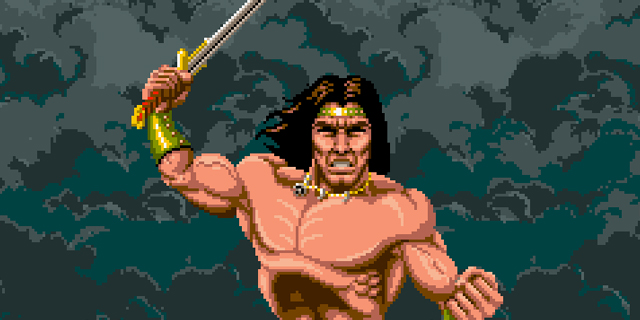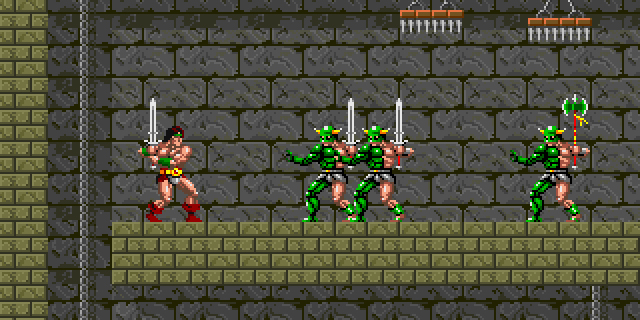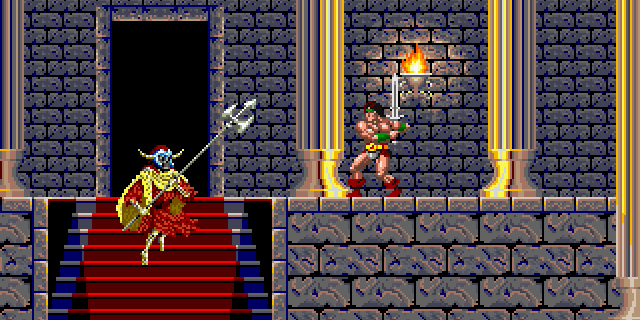
Rastan isn’t the sharpest knife in the drawer, but he’s not dumb. Barbarians don’t just charge into battle, hoping their muscles can get them through a hundred enemies unscathed; they train to be better than their enemies, to attack at the right moment, to back down when needed.
Of course, being strong helps!
That’s the interesting part of Rastan. It’s not a freeform game by any means, but it doesn’t heavily rely on level design either. It sits at a middle point that is extremely uncommon: the player can tackle any obstacle just by ploughing through and hitting the attack button at the right time, but it’s unlikely.
A lot can be learned by how a game handles jumping. Most 2D platformers fall into three categories: the most freeform of them use inertial physics that allow you to change your jump while in the air, as is the case with Super Mario Bros. The most restrictive have a fixed distance and arc, like Castlevania. The third kind has jump height and distance based on how long you press the jump button, like Mega Man.

But of course, Mega Man (released during the same year) is a game about shooting and jumping, and there’s not a lot of jumping in Rastan. Still, the philosophies are similar; they are both games in which the player must gauge how to approach an obstacle or enemy in general terms without putting himself in too much danger. Perhaps it’s no coincidence that both games make use of life bars, because they’re well-suited to that sort of proportional risk gameplay.
Rastan may look dumb at first glance, and it isn’t the deepest Taito title, but it’s not mindless. Often I find myself trying to enjoy a game I haven’t played in a while, only to become frustrated because my skills have deteriorated since I last played. Rastan still retains that early arcade aftertaste, being more about what’s happening on the screen than any general strategy the player may have up his sleeve. It’s a very welcoming title in that regard, and the huge sprites, rocking soundtrack and aural quality still look great today.
Rastan was widely ported when it was originally released, and the PC and Master System ports are surprisingly good for their hardware and age. They weren’t censored either; harpies still have visible breasts and blood can be seen, a rarity for the time.

But inferior ports aren’t needed in the age of powerful emulation, and while the Taito Legends titles (PS2/Xbox) may not be flawless, it’s hard to say no to compilations that give you Darius Gaiden, Elevator Action Returns and Rastan. Both discs are quite worth owning (and very cheap), but there’s also a smaller PSP compilation, Taito Legends Power-Up. It may not have as many quality titles, but it allows you to play Rastan on the go. Choose wisely!



















